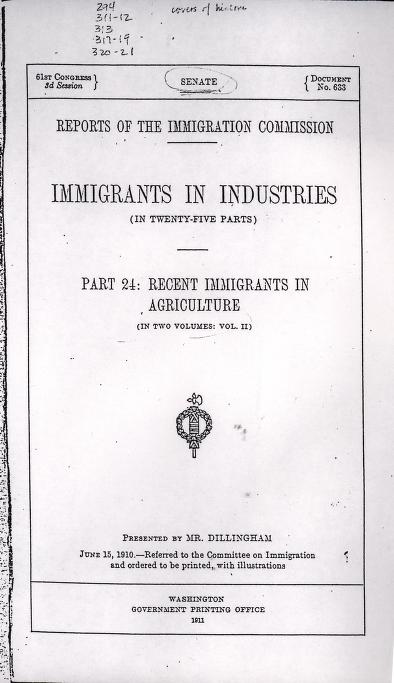




Advanced Search
| Online Collection |
|
||||||||||||||||||||||
|
The Dillingham Commission was founded by Vermont Senator William Paul Dillingham in 1907. Dillingham's interest in immigration was in part a result of pressure by anti-immigration groups. His study eventually ran to dozens of volumes and cost more than a million dollars. Its conclusions would shape U.S. immigration policy before World War II. In particular, it concluded that Southern and Eastern European immigrants were distinctly inferior to those from Northern Europe. Its analyses classified immigrants by "race," categories based on culture, language, and "national character." Part of the commission's efforts was to analyze the distribution and performance of immigrants in certain key areas. The excerpts here come from its work in the Connecticut River Valley, excerpts that conclude, in part, that the higher birth rates of Polish immigrants would eventually overwhelm the native-born. In 1920, Dillingham shepherded through the first immigration quotas in U.S. history.
|
"Immigrants in Industries, Part 24: Recent Immigrants in Agriculture" from Reports of the Immigration Commission
|
| |
Home | Online Collection | Things
To Do | Turns
Exhibit | Classroom | Chronologies | My
Collection
About This Site | Site Index | Site Search | Feedback


